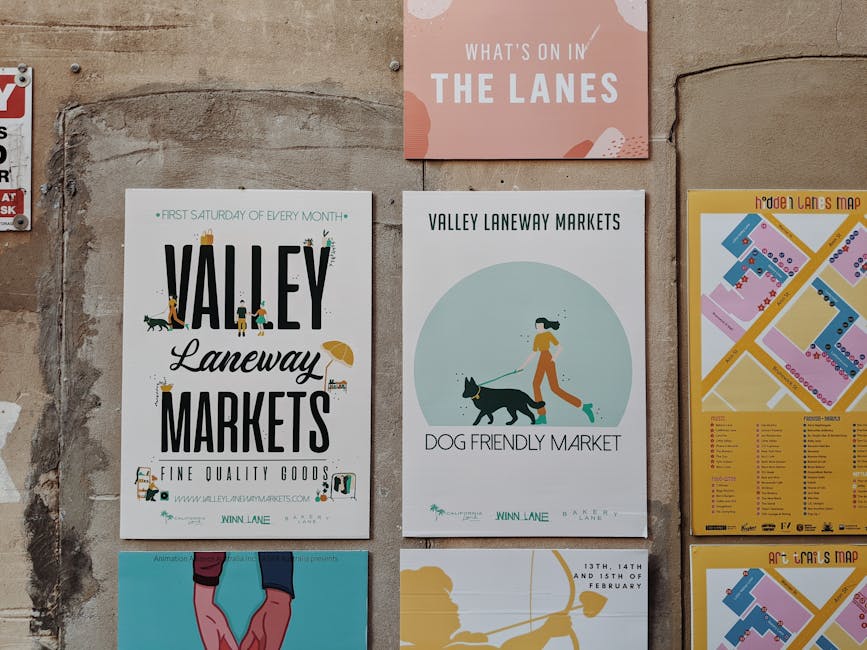So, you’re hearing a lot of talk about this whole PPC ads business, right? Especially now, here we are in 2025, and it feels like everyone’s buzzing about it, or maybe you’ve just seen a bunch of these little sponsored links pop up when you’re trying to find something online. It can feel a bit confusing, like another one of those internet marketing acronyms people throw around, sometimes without actually explaining what they mean, or really making it clear how it all ties into what you might be doing with your own website or business, or even just when you’re looking for, I don’t know, the best new robot vacuum cleaner. It’s not some super secret club, though it can feel that way. Really, it’s just a way for businesses, big ones and smaller ones too, to get their messages, their products, their services, right in front of people at the exact moment they’re looking for them. Which, when you stop and think about it, is a pretty neat trick if you can pull it off. It’s got a lot of moving parts, yes, but at its heart, it’s a pretty simple idea when you boil it down.
What Even Is PPC Ads, Anyway? (And Why Do People Talk About It So Much in 2025?)
Okay, so PPC, that stands for Pay-Per-Click. Pretty descriptive, right? What it means is, advertisers, which could be anyone with something to sell or tell, well, they pay a fee every single time someone clicks on one of their advertisements. Simple as that. It’s like, instead of paying for a billboard that everyone drives past, whether they care or not, you’re paying only when someone actually bothers to stop and look closer at your ad. That makes it, generally, a fairly efficient way to spend money on getting noticed.
Now, why is it such a thing in 2025? Well, honestly, it’s because people are still, and maybe even more so, living online. We’re constantly searching, clicking, browsing, scrolling. And as the internet gets bigger, with more and more stuff out there, it just gets harder for your own little corner of the web, or whatever it is you’re offering, to get seen naturally. SEO, or search engine stuff, is super good and everyone should do it, of course, but that can take a good long while to show results. PPC, on the other hand, it’s kind of like hitting the fast-forward button. You set up your ads, put some money down, and boom, you can be right there at the top of Google or wherever, often within hours. This quick visibility makes it a really popular choice for all sorts of situations, especially when you need to get the word out fast or target a super particular type of person. It’s like an auction, sort of, but for ad space, where what you pay isn’t the only thing that makes you win. Google, or whatever platform it is, also looks at how good your ad is, how relevant it seems to the person searching, and other little bits and pieces. That’s why you hear about it all the time; it just works for getting people through the digital door.
So, How Does This Whole PPC Thing Actually Work? It’s Not Exactly Rocket Science, But Kinda
Alright, let’s try and make sense of how this works, without getting too bogged down in all the techy jargon. Picture this: someone types something into Google, like “best waterproof headphones for swimming.” Google then has to decide what to show them. Besides the regular search results, there are often ads. These aren’t just random, mind you. There’s a whole little mini-auction happening in milliseconds behind the scenes, every single time someone hits ‘enter’.
Here’s the general gist of it:
You, as the advertiser, pick keywords. These are the words or phrases you think people will type when they’re looking for what you offer. So, if you sell those swimming headphones, you’d pick “waterproof headphones,” “swimming earbuds,” maybe even “audio gear for pools.” Then you set how much you’re willing to pay per click for each of those keywords, that’s your bid. And then you write your ad copy, the little bit of text that shows up in the search results, making it sound good and relevant to what someone might be looking for, of course.
But it’s not just about who bids the most money. Nope. Google, and other platforms like it, they also look at something called a Quality Score. This score is, sort of, a guess at how relevant and helpful your ad and your website are going to be to the person who clicks. So, if your ad copy is really good, if your keywords match what people are searching for well, and if the page someone lands on after clicking your ad (we call that the landing page) is also super useful and easy to use, you get a higher Quality Score. A high Quality Score can mean you pay less per click, even if someone else bids higher than you. It’s a way for the system to try and keep things fair, and make sure people see good, relevant ads, not just ads from the richest company.
This whole process, with the bidding and the Quality Score and all that, happens for every single search query. It’s pretty wild, really, when you think about how much data is being crunched just to show you a few little ads at the top of your search results. And this all gets organized into campaigns and ad groups, which are just ways to keep all your different ads and keywords neatly arranged, helping you keep track of things and make changes easily.
Why Bother With PPC? Like, What’s the Point for Your Business Right Now?
So, after all that explaining, you might be asking, “Alright, but why should I even bother with this? What’s in it for my business in 2025?” And that’s a perfectly fair question, especially with so many other marketing things to think about. But there are some pretty solid reasons why PPC is still a really big deal for lots of businesses.
First off, it’s about speed. If you launch a new product, or you just opened a new shop, or you’re running a really timely sale, PPC can get you noticed almost immediately. You don’t have to wait months for your website to naturally show up high in search results. With PPC, you can be there, sometimes within minutes of your ads being approved. That immediate visibility is a huge plus, especially for businesses that need to react quickly to market changes or current events.
Then there’s the targeting aspect. Oh boy, the targeting. It’s pretty amazing, actually. With PPC, you can get super specific about who sees your ads. You can target people based on what they’re searching for, where they live, what websites they tend to visit, what age group they’re in, even what kinds of things they’ve shown an interest in before. This means your advertising money is, generally, going to people who are much more likely to be interested in what you’re selling. It’s not just throwing spaghetti at the wall; it’s more like aiming a really focused laser. This helps your marketing budget go further, because you’re not wasting clicks on people who were never going to buy anyway.
Another big thing is measurability. With PPC, you know exactly what’s happening. You can see how many people saw your ad, how many clicked it, how much each click cost you, and even, if you set things up right, how many of those clicks turned into a sale or a sign-up. This kind of detailed information is super handy. It lets you tweak your ads, change your keywords, adjust your bids, and generally make everything work better over time. You’re not guessing; you’ve got data. This helps you get more bang for your buck, always a good thing, particularly as business budgets can feel a bit tighter sometimes.
Lastly, control. You control your budget, your ads, your targeting. You can pause a campaign if you need to, ramp it up if things are going well, or change your messaging on the fly. It gives you a lot of say in how your advertising performs. So, for a lot of businesses, especially those who need quick results, very focused marketing, and clear data, PPC is just a really strong contender in the whole marketing mix.
Different Kinds of PPC Ads You Might See Out There (It’s Not Just Google, Y’know)
When people hear “PPC,” their minds often go straight to Google. And yes, Google Ads (what used to be called Google AdWords) is a huge player, probably the biggest. But the world of Pay-Per-Click is a lot bigger and more varied than just those little text ads at the top of your Google search results page. There are actually a bunch of different ways you might bump into these paid-for clicks.
One of the most common, obviously, is Search Ads. These are those text-only ads that appear right there on the search engine results pages, like on Google or Bing. They look a lot like regular search results, but they usually have a little “Ad” label next to them, maybe sometimes in a tiny font. These are designed to catch someone when they’re actively looking for something specific.
Then there are Display Ads. These are the visual ones – banners, images, sometimes even short animated bits – that you see on other websites. You know, you visit a news site, and suddenly there’s an ad for those waterproof headphones you were looking at earlier, following you around. That’s generally how it works. These aren’t usually shown to someone actively searching, but rather to people browsing content that relates to the ad, or to people who have shown interest in certain products before. It’s more about building brand recognition or reminding people about something they almost bought.
And, of course, in 2025, you absolutely cannot ignore Social Media Ads. Facebook, Instagram, TikTok, LinkedIn, even X (formerly Twitter) – all these platforms have their own robust ad systems. These ads are often image-based, video-based, or carousel ads, and they’re shown right in your feed as you’re scrolling through. The targeting here can be incredibly detailed, based on all the data these platforms gather about our interests, demographics, and behaviors. So, if you’re into, say, artisanal coffee and vintage board games, you’re pretty likely to see ads for exactly that kind of stuff in your Instagram feed.
Shopping Ads, sometimes called Product Listing Ads, are another big one. If you search for a specific product on Google, you often see a row of products with pictures, prices, and store names right at the top of the search results. These are usually shopping ads. They’re super direct for e-commerce businesses, showing the product right there, ready to be clicked and purchased.
And lastly, we’ve got Video Ads. You know them from YouTube, right? Those ads that play before your video, or sometimes in the middle. These can be skipped or not, depending on the format. But they’re also a pay-per-click model, or sometimes pay-per-view, where the advertiser pays when someone watches a certain part of the video. It’s a great way to tell a story or show a product in action. So yeah, PPC isn’t just one thing; it’s a whole bunch of different formats and places you can put your ads, each with its own little quirks and advantages.
Getting Started with PPC: A Bit of a Heads-Up for Folks
So, if all this has sounded like something you might want to try for your own business, or just generally find out more about, here’s a sort of quick, less formal guide to getting your feet wet. It’s not as scary as it sometimes sounds, though it does require a little bit of planning and attention, kind of like tending to a garden, you know?
First off, you need to figure out your goal. What exactly do you want to achieve with these ads? Do you want more website visitors? More sales? People to sign up for your newsletter? Just more calls to your business? Having a clear goal helps you set up everything else, and it lets you measure whether your ads are actually doing any good. Don’t just jump in because someone said PPC is a good idea. Know what good means for you.
Next, you’ll need to think about your budget. How much money are you comfortable spending? PPC can be super flexible; you can start small and then scale up. But you need to have a number in mind. It’s not a bottomless pit, normally. Set a daily or monthly limit, and the systems will try and stick to it. This is considered to be one of the good parts about it, you have control.
Then comes keyword investigating. This is where you put yourself in the shoes of your potential customer. What words or phrases would they type into a search engine to find what you offer? Don’t just guess; there are tools out there that can help you find out what people are actually searching for, and how many of them. Be fairly specific here, especially when you are just getting started.
After that, you’ll write your ad copies. This is the text (or design for display ads) that people will actually see. Make it clear, make it attractive, and make it relevant to the keywords you picked. It needs to make people want to click. And make sure it ties in with your landing page – which is where people end up after they click. That page has to be good, too. If your ad promises one thing and your landing page delivers something totally different or is hard to use, people will just leave, and you’ll have paid for a click that went nowhere.
And finally, once your ads are live, the work isn’t really done. You need to keep an eye on things. Look at the data. See which ads are performing well, which keywords are getting clicks, and how much you’re spending. Sometimes you need to adjust your bids, sometimes you need to tweak your ad text, or sometimes you might need to try new keywords altogether. It’s an ongoing process, not really a one-and-done kind of deal. But the neat thing is, you can always make it a bit better.
So, PPC ads, they’re a pretty dynamic way to get noticed in the very crowded internet of 2025. It gives businesses, big and small, a way to put their stuff right in front of people who are looking for it, often at that perfect moment when they’re ready to buy or learn more. It takes a little bit of getting used to, certainly, and there’s always something new to learn or adjust, but the potential upside for visibility and getting customers is, well, pretty obvious. It’s another tool in the online marketing toolbox, and for many, it’s a tool that really works.
—
FAQ: What is PPC Ads?
Q1: So, what exactly is PPC ads, in the simplest terms?
A: PPC ads, which stands for Pay-Per-Click, is a type of online advertising where businesses pay a fee every single time someone clicks on one of their ads. It’s like an auction for ad space, but you only pay when someone actually interacts with your ad by clicking it.
Q2: Where do I normally see these PPC ads? Are they only on Google?
A: You see PPC ads in many places! Most commonly, they appear at the top or bottom of search engine results pages (like Google or Bing), usually marked with a little “Ad” label. But they also show up as image or video ads on other websites you visit (called display ads) and within your social media feeds on platforms like Facebook, Instagram, or TikTok.
Q3: How is PPC different from, like, just showing up in search results naturally?
A: The main difference is that with PPC, you pay for visibility (per click), and you can often get to the top of search results almost immediately. Showing up naturally, which is called SEO (Search Engine Optimization), is about making your website good enough to rank high over time without paying directly for each click, but that can take a lot longer to achieve. PPC is much faster for getting seen.
Q4: Is it super expensive to run PPC ads? How do I control how much I spend?
A: It doesn’t have to be super expensive; you actually have a lot of control over your spending. You set a daily or monthly budget, and the advertising platforms will try to stick to it. You also set bids for how much you’re willing to pay per click. This means you can start small and adjust your spending as you see how your ads are performing, which is often a pretty good way to do things.
Q5: What’s the main point of a business doing PPC advertising?
A: The big idea for businesses doing PPC is to get their products, services, or information directly in front of people who are actively looking for them, and to do it quickly. It helps get immediate visibility, lets you target very specific types of customers, and you can measure exactly how well your ads are doing, helping you spend your marketing money more smartly.



